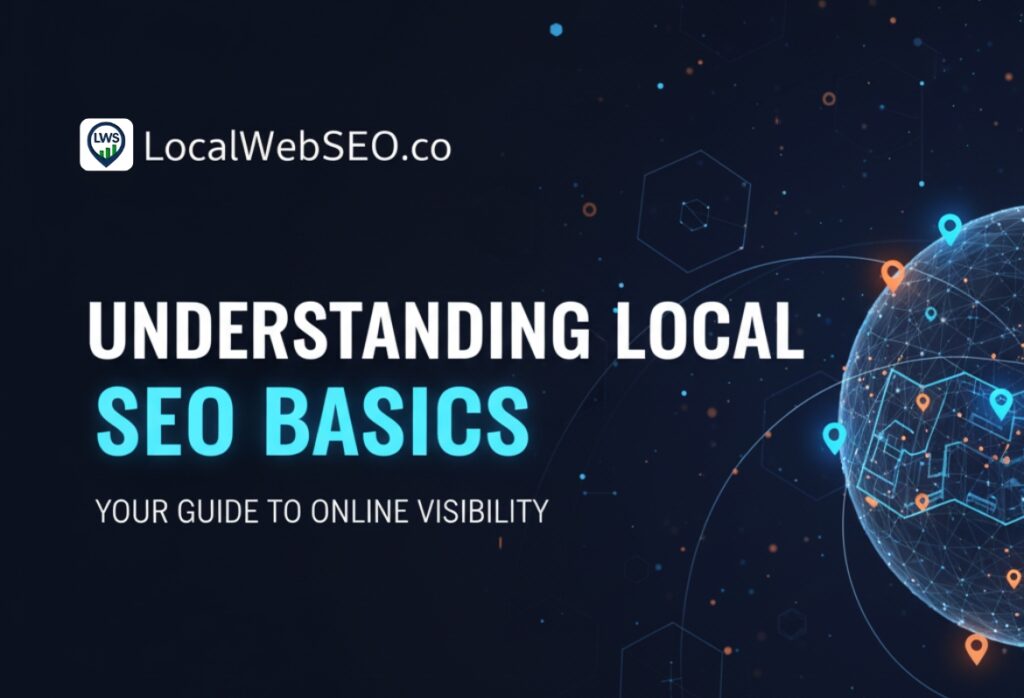In today’s digital landscape, where over 46% of all Google searches carry local intent, mastering local SEO basics is no longer optional—it’s essential for any business aiming to thrive in its community. Whether you’re a cozy coffee shop on Main Street, a bustling auto repair garage in the suburbs, or a franchise expanding into new neighborhoods, local SEO (Search Engine Optimization) ensures that potential customers searching for “coffee near me” or “best auto repair in [your city]” find you first. This beginner’s guide to local SEO breaks down the fundamentals, offering actionable insights to boost your visibility, drive foot traffic, and convert online searches into loyal customers.
Imagine this: A harried parent types “pediatric dentist open now” into their phone during rush hour. If your practice ranks prominently in the local search results, complete with glowing reviews and accurate hours, you’ve just won a new patient. But without a solid grasp of local SEO basics, your business could be buried on page two—or worse, not showing up at all. According to recent industry data, 78% of mobile local searches lead to an offline purchase within 24 hours, and over 90% of consumers read online reviews before choosing a local business. These stats underscore why local SEO for small businesses isn’t just a buzzword; it’s a revenue driver.
In this comprehensive guide, we’ll explore what local SEO entails, why it matters, its core components, a step-by-step implementation plan, pitfalls to dodge, and how to track your progress. By the end, you’ll have the tools to elevate your local search rankings and turn proximity into profit. Let’s dive into the world of local SEO basics and unlock your business’s full potential.
What is Local SEO and How Does It Differ from Traditional SEO?
At its core, local SEO is a subset of search engine optimization that targets geographical areas, helping businesses appear in location-specific searches. Unlike traditional (or global) SEO, which focuses on broad, nationwide, or international keywords to attract traffic from anywhere, local SEO homes in on “near me” queries, map packs, and hyper-local relevance. Think of it as the digital equivalent of a neighborhood billboard—visible only to those who matter most: your immediate customers.
Traditional SEO might optimize a content site for “best running shoes” to draw in global shoppers, but local SEO refines that to “running shoe store in downtown Seattle” for a brick-and-mortar retailer. Google’s algorithm prioritizes factors like proximity, relevance, and prominence, meaning your site’s content must align with the user’s location and intent.
Key differences include:
- Geographic Focus: Local SEO utilizes tools such as Google Maps and local directories, whereas traditional SEO relies more heavily on organic blog traffic.
- User Intent: Local searches often imply immediate action (e.g., “pizza delivery tonight”), demanding faster, more mobile-optimized responses.
- Metrics of Success: Instead of just website visits, local SEO measures calls, directions requests, and in-store visits.
Understanding these nuances is the first step in your beginner’s guide to local SEO. By prioritizing local signals, businesses can capture 88% of local mobile searches that result in a store visit or phone call within a day.
Why Local SEO is Crucial for Modern Businesses
In an era where smartphones are extensions of our hands, ignoring local SEO basics means forfeiting a massive opportunity. Local searches aren’t fleeting whims—they’re decision-makers. Businesses that invest in local SEO for small businesses experience tangible benefits, including increased foot traffic, higher conversion rates, and stronger community ties. But let’s back this up with why it packs such a punch.
First, consider the sheer volume: Nearly half of all searches have local intent, and with 60% of those coming from mobile devices, speed and accuracy are paramount. A well-optimized local SEO strategy positions your business in the coveted “local pack”—those top three map results that snag 44% of clicks. For small businesses, this can mean the difference between a quiet day and a booked schedule.
Beyond traffic, local SEO builds trust. Consumers trust Google like a trusted neighbor; when your business appears with verified details and positive reviews, it signals legitimacy. This social proof is gold—businesses with complete profiles are 2.7 times more likely to be considered reputable.
Here are the top benefits of embracing local SEO basics:
- Enhanced Visibility: Dominate local search results, outshining competitors who overlook geo-targeting.
- Cost-Effective Marketing: Organic local rankings reduce reliance on pricey ads, with ROI often exceeding 500% for optimized campaigns.
- Targeted Leads: Attract ready-to-buy customers in your zip code, filtering out irrelevant global traffic.
- Improved Customer Engagement: Encourage reviews and interactions that foster loyalty and word-of-mouth growth.
- Competitive Edge: In saturated markets, local SEO levels the playing field for independents against big chains.
For franchises or multi-location enterprises, scaling local SEO across sites amplifies reach exponentially. The result? Not just more eyes on your business, but the right eyes—those that translate to sales. As e-commerce booms, local SEO reminds us that physical presence still rules for services like plumbing, dining, and retail.

Core Components of an Effective Local SEO Strategy
Building a robust local SEO foundation requires attention to several interlocking elements. These aren’t silos; they work in tandem to signal to search engines that your business is a local authority. Let’s unpack the essentials.
Google Business Profile: Your Digital Front Door
Formerly Google My Business, the Google Business Profile (GBP) is the cornerstone of local SEO basics. It’s a free listing that appears in Google Search and Maps, showcasing your address, hours, photos, and reviews. A complete, optimized GBP can skyrocket your visibility—businesses with photos receive 42% more directions requests.
To optimize:
- Claim and verify your profile immediately.
- Fill every field: Add high-quality images, services, attributes (e.g., “wheelchair accessible”), and regularly post updates.
- Respond to all reviews promptly to boost engagement signals.
On-Page Local SEO: Embedding Location into Your Site
Your website must scream “local” without overstuffing keywords. Integrate your city, neighborhood, and region naturally into titles, meta descriptions, headers, and content to create a cohesive and engaging experience. For instance, a page titled “Best Plumber in [City Name]: Emergency Services 24/7” targets long-tail local SEO queries.
Essential tactics:
- Create location-specific landing pages for each service area.
- Use schema markup (local business schema) to help search engines understand your details.
- Ensure mobile-friendliness, as 76% of local searches are conducted on mobile devices.
Local Citations: Consistency is Key
Citations are online mentions of your business’s name, address, and phone number (NAP) across directories like Yelp, Bing Places, and Apple Maps. Inconsistent NAP can confuse algorithms, resulting in tanked rankings. Aim for quality over quantity—focus on high-authority sites.
Build citations by:
- Auditing existing listings for accuracy.
- Submitting to 50+ core directories (e.g., Yellow Pages, TripAdvisor).
- Monitoring with tools like Moz Local for discrepancies.
Online Reviews: The Voice of Your Customers
Reviews aren’t just feedback; they’re the fuel that drives local SEO rocket. Positive ones enhance prominence, while quantity and recency matter—aim for 4+ stars with at least 10 reviews. Encourage them via post-service emails or QR codes in-store, and always reply to build rapport.
Neglect these components, and your local search rankings suffer. Together, they create a cohesive signal: “This business is relevant, prominent, and trustworthy right here, right now.”
Step-by-Step Guide to Implementing Local SEO Basics
Ready to roll up your sleeves? This beginner’s guide to local SEO includes a straightforward roadmap. Follow these steps to see results in weeks, not months.
- Audit Your Current Presence: Start with a free GBP audit. Search for your business name and city on Google and note the rankings, citations, and review health. Tools like Google’s own insights can reveal gaps.
- Claim and Optimize Your Google Business Profile: As mentioned, verify ownership and populate all sections. Add weekly posts promoting events or offers to keep it fresh.
- Enhance On-Page Elements: Update your website with local keywords. For each page, research relevant terms using Google’s Keyword Planner (a free tier is available). Implement H1 tags like “Top [Service] in [City]” and include alt text for images that describe local landmarks.
- Build and Clean Citations: Use a spreadsheet to track NAP across 20-30 sites. Submit new ones on a weekly basis, prioritizing industry-specific directories (e.g., Healthgrades for doctors).
- Solicit and Manage Reviews: Set a goal of 5 new reviews monthly. Automate requests via Google Forms linked to GBP. Monitor sentiment to address issues proactively.
- Create Location-Specific Content: Blog about local topics—”5 Hidden Gems in [Neighborhood] for Foodies”—to attract backlinks and shares.
- Monitor and Iterate: Track progress monthly, making adjustments based on the data.
Common Mistakes to Avoid in Local SEO
Even seasoned marketers trip over local SEO pitfalls. Sidestep these to safeguard your efforts:
- Inconsistent NAP Data: A mismatched address on one site can undo months of work—always cross-verify.
- Ignoring Mobile Optimization: With local searches predominantly conducted on mobile devices, slow-loading sites lose out; prioritize responsive design.
- Overlooking Reviews: Failing to encourage or respond erodes trust—treat every review as a ranking factor.
- Keyword Stuffing: Natural integration beats cramming “local SEO” everywhere; focus on user value.
- Neglecting Updates: Stale GBP information (e.g., outdated hours) frustrates users and negatively impacts rankings—refresh quarterly.
- Skipping Analytics: Flying blind means missing insights; track what drives calls vs. visits.
By dodging these, your local SEO basics strategy stays lean and effective.
Measuring Success: KPIs for Local SEO Performance
Success in local SEO isn’t about vanity metrics—it’s about the bottom-line impact. Focus on these key performance indicators (KPIs) to gauge ROI.
- Impressions and Clicks: Track via Google Search Console for local query volume.
- Conversion Actions: Monitor calls, directions, and website actions in GBP Insights.
- Review Volume and Rating: Aim for steady growth; higher scores correlate with 10-15% ranking lifts.
- Foot Traffic Attribution: Utilize GBP’s location insights to track in-store visits tied to searches.
Conclusion: Start Your Local SEO Journey Today
Armed with these local SEO basics, you’re equipped to transform your business’s online presence from invisible to indispensable. Remember, local SEO isn’t a one-off task—it’s an ongoing commitment to relevance and engagement that pays dividends in customer loyalty and revenue. Whether you’re fine-tuning your GBP or crafting that first local blog post, small steps yield big leaps.
Ready to elevate your local SEO for small businesses? Dive in with our step-by-step guide and watch your community discover you. For personalized strategies that deliver measurable results, connect with experts who live and breathe local search success.
“Remember that mastering local SEO basics involves testing different strategies, tracking your results, and adjusting them until you find the optimal combination for success..”
Work with Experts to Master Local SEO Basics and Boost Your Business Visibility
Just because one marketing strategy worked before doesn’t mean it will always deliver results. When it comes to growing your business locally, understanding and applying local SEO basics is essential. A flexible approach that adapts to your customers’ search behaviors ensures maximum visibility, more local traffic, and measurable growth.
Ready to boost your business? Start implementing local SEO basics today and watch your local presence thrive.




